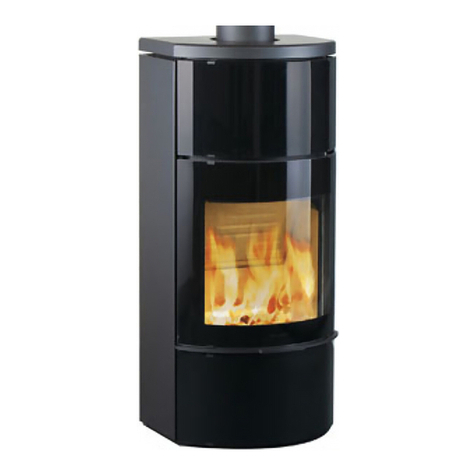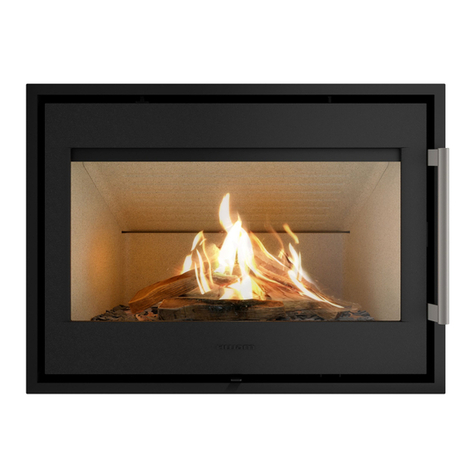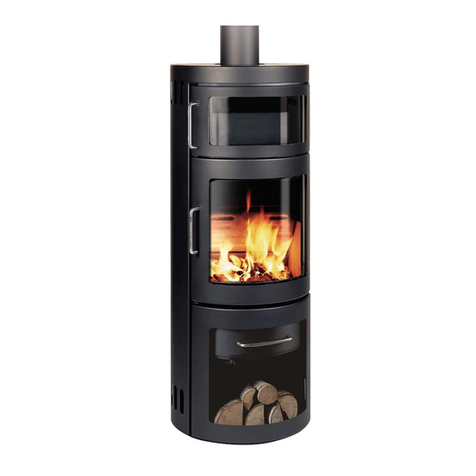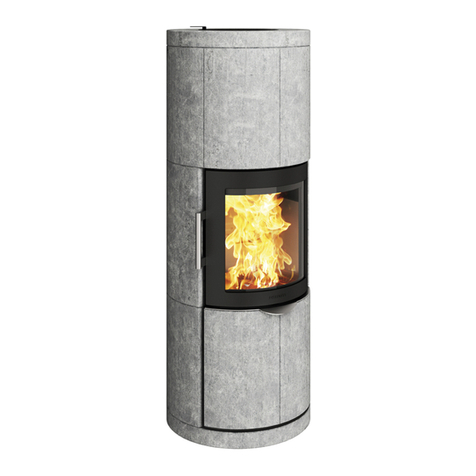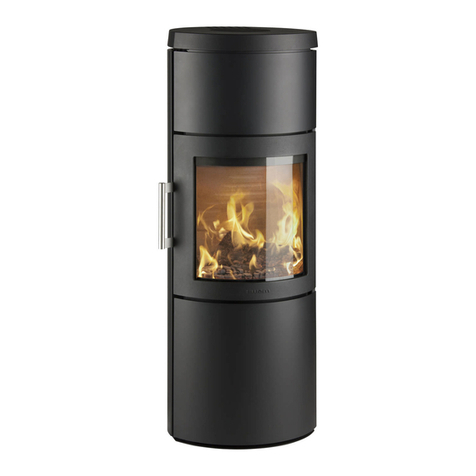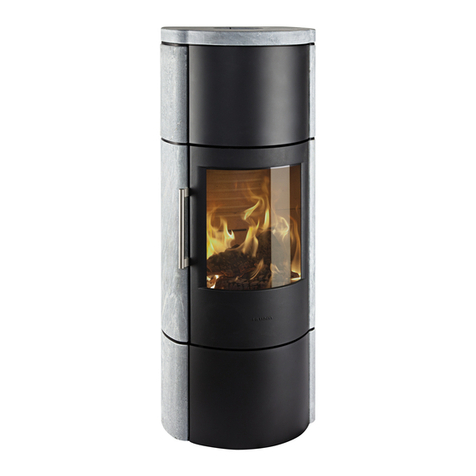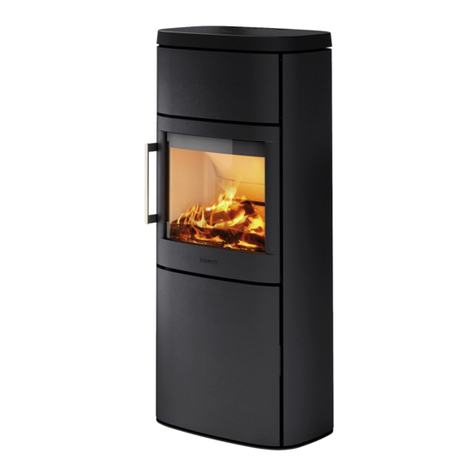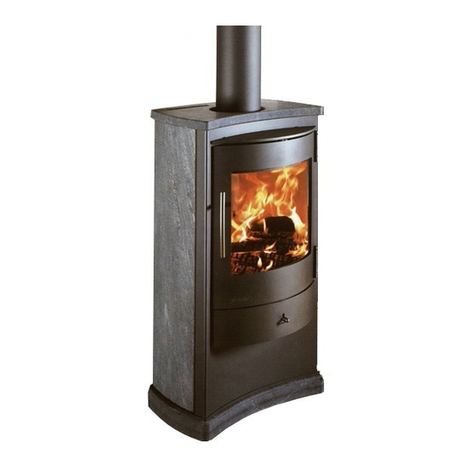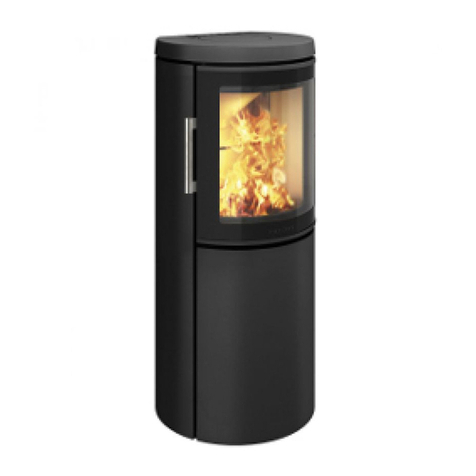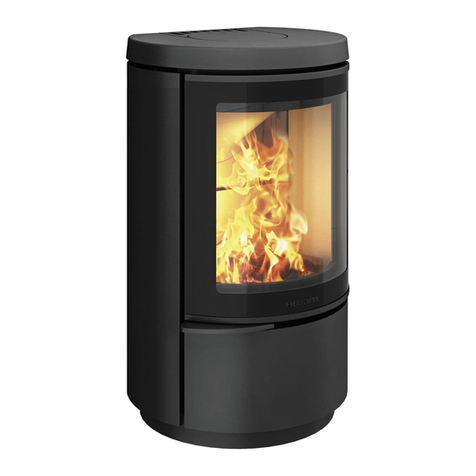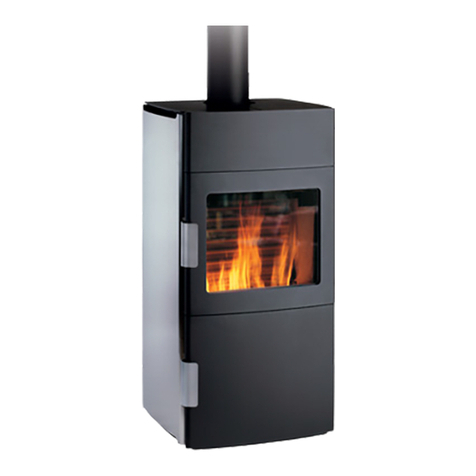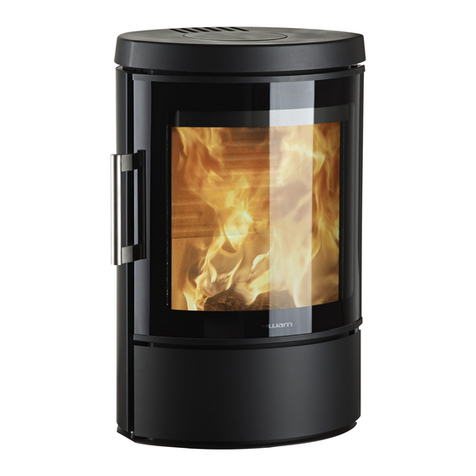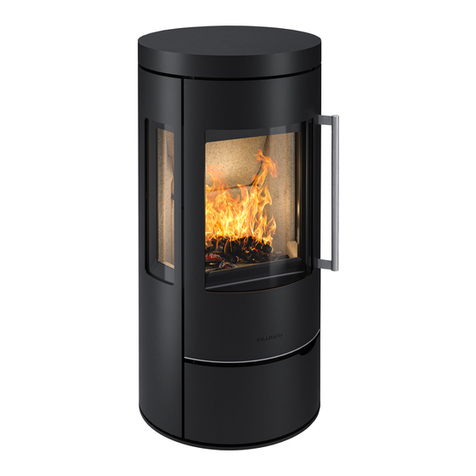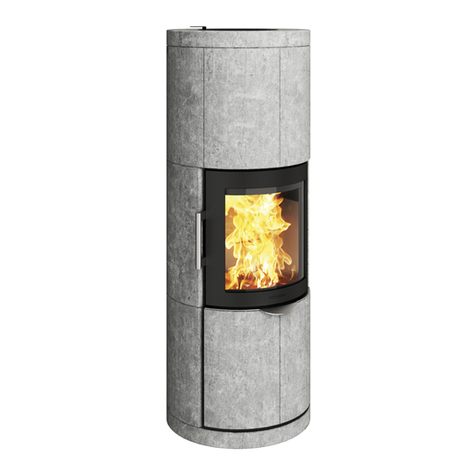
Page 8 of 16 pages
sealing (8) is placed down into the smoke outlet socket (drawing A1).At the same time a cushion (9)
made out of the stove kit delivered with the baking section is placed round in the edge of the coo-
king holes (drawing A2).Then the baking section (5) is placed on top of the stove so the smoke inlet
sockets of the baking section are standing down in the smoke outlet as well as in the cooking holes
on top of the stove. Chimney or smoke flue (11) is connected, and the cooking holes are closed with
the cover plates coming from the cooking holes of the stove.
The function of the baking section
When the by-pass damper of the cooking section in pushed in, the hot smoke gas is conducted up
around the baking section, thus giving the maximum heat in the baking section.When the by-pass
damper (7) of the baking section is pulled completely out, the smoke gas is conducted behind the
baking section and directly out into the chimney, thus giving minimum heat in the baking section.
Consequently, the temperature in the baking section is regulated by opening the by-pass damper
more or less.
Valve in the baking section
In the baking section a valve is mounted that, when opened, is functioning as an extraction in the
cooking section when it is used.
Mounting of the wood magazine
The wood magazine (6) is placed where the stove is to stand, and the stove is placed on top of it.The
four guide pins on the wood magazine must catch the legs of the stove. If the stove tips a little in the
coupling between the stove and the wood magazine, this is adjusted by means of the two adjusting
screws (10) mounted at the back of the wood magazine.
Air damper in the front door (Drawing D)
The air damper in the front door regulates the rinsing air that keeps the glass free from soot.The
sliding damper should only be closed that much down that the rinsing air is still able to keep the
glass clean.
The rinsing air enters into the secondary air supply ensuring a good secondary combus-tion of the
smoke gases.
The glass in the door can only keep itself free from soot, if the chimney draft is sufficient, the combu-
siton is optimal, and if the firewood is dry.At nominal chimney draft, half open will be suitable.
Chimney
The chimney is the“engine” of the stove and it is crucial for the functioning of the woodburning stove.
The chimney draft provides a partial vacuum in the stove.This vacuum removes the smoke from the
stove, sucks air through the dampers for the so-called glass pane rinse which keeps the glass free of
soot, and sucks in air through both primary and secondary dampers for the combustion.
The chimney draft is created by the differences in temperature inside and outside the chimney.The hig-
her the temperature within the chimney, the greater the draft. It is crucial, therefore, that the chimney
is warmed up properly before closing the damper and limiting the combustion in the stove (a brick
chimney takes longer to warm up than a steel chimney). On days where the weather and wind conditi-
ons create insufficient draught inside the chimney,it is even more important to warm up the chimney as
quickly as possible.The trick is to quickly get some flames going. Split the wood into extra fine pieces,
use an extra firelighter, etc.







